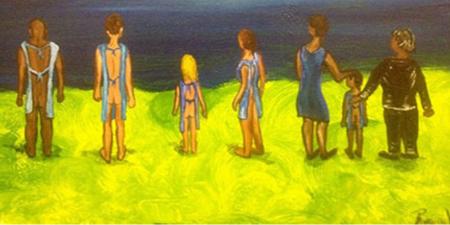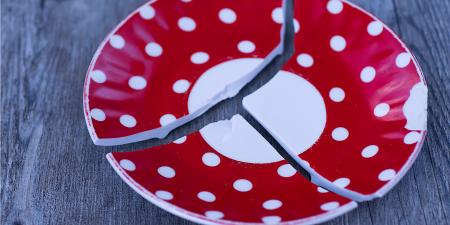Case
Fifteen-year-old Mandy has acute myeloid leukemia (AML) and needs a bone marrow transplant. Mandy’s parents and younger sister Jessica all undergo testing to determine whether any of them is a prospective donor. Jessica, who is eight, is found to be a match, and Mandy and her family are overjoyed that she will be able to have the transplant.
Jessica’s parents explain to her that she is able to help her sister by having an operation to take part of the marrow inside her bones and give it to her sister, who, as Jessica knows, is critically ill. Jessica seems excited about the possibility of helping her older sister, so the parents provide initial consent for her to do so.
Jessica’s enthusiasm remains when she and her parents meet with Dr. Malone, the bone marrow transplant physician, and his team. Jessica asks some questions, and Dr. Malone assures her that her bones and blood will make more marrow to replace what is removed. Then Dr. Malone asks Jessica to stay to talk with him by herself. During this conversation, it becomes clear to him that she has not fully understood what the donation would entail. She seems concerned and anxious as she asks him whether it will hurt and about what could happen to her if she has the procedure, and she is visibly frightened about having to be put to sleep.
Dr. Malone is concerned that Jessica may be unduly influenced by her parents’ and sister’s expectations that she will donate. When he talks with her parents, however, they say they know Jessica well and that her sister’s health is more important to her than the immediate pain of the procedure. They explain that they, along with Mandy, will give Jessica much support and attention, and they insist that she will feel privileged and glad to have been able to help her sister for the rest of her life.
Commentary
A central question in this case is the ethical permissibility of using Jessica as a bone marrow donor in light of her seeming reticence and fear regarding anesthesia and pain. Some might prioritize the physician’s duty to respect patient autonomy. In this era of patient-centered care, a case like Jessica’s sparks a great deal of controversy because at first glance it is unclear whether, because of her age and familial pressure, she is capable of assenting voluntarily to an invasive procedure from which she derives no medical benefit.
Whenever possible, a child’s opinions concerning the interventions to be performed on his or her body should be carefully considered. Although minors cannot technically consent to medical interventions—parents do so on behalf of their children—we honor their opinions in the concept of, and in seeking, assent. We generally accept the moral authority of a child’s parents, except in cases of abuse or neglect. Parents are uniquely situated to both know and protect the child’s best interests, and therefore, the reasoning typically goes, they will only permit the child to undergo a potentially painful procedure when the health benefits of that procedure outweigh the risks.
When the benefit of treatment is clear, we tend to have fewer ethical qualms about treating a child without her assent because it is in her best interest. However, for a procedure that confers no direct medical benefit to the child, respecting a child’s autonomy—obtaining a child’s assent or appropriately regarding his or her dissent or refusal—is generally thought to be of paramount ethical importance. How should assent, dissent, or refusal in a case of bone marrow donation be weighed in ethical decision making concerning a child donor? Decision makers are burdened with great responsibility: their choice will have life-and-death consequences for another vulnerable child. Which criteria ought to be used to determine whether and when it’s ethical to expect this level of responsibility from a child like Jessica?
The American Academy of Pediatrics Committee on Bioethics (AAPCOB) deems the use of a child bone marrow donor ethically appropriate when five conditions are met [1]. Jessica’s case easily meets three of the five criteria. First, no adult matches are available to donate to the child needing the transplant. Second, the bone marrow transplant must confer a reasonable benefit to the recipient, which can be assumed in this case. Depending on the stage of AML, a bone marrow transplant confers between 30 and 65 percent chance of survival [2]. And third, a strong personal relationship must exist between the donor and the recipient. It seems in this case that Jessica and Mandy have a normally tight sisterly bond, but open ethical questions can certainly remain about how the relationship is assessed and by whom.
The fourth condition requires consideration of the risks and benefits of donation. Medical, emotional, and psychological risk to the child donor must be minimal and reasonable in comparison to the benefit gained by the donor and recipient [1]. Bone marrow harvesting, even in children, is considered safe with only slight risk [2]. The general anesthesia, as well as the harvesting procedure itself, however, can have adverse effects. In a small number of donors, harvesting causes nerve, bone, and tissue damage [2]. Rare potential morbidities include pulmonary embolism, sickle cell crisis, and others [2]. And though mortality is quite uncommon—less than one in ten thousand [2]—it is not zero. More likely, though, the physical consequences for Jessica would be limited to pain and days required for recovery. However, possible psychological sequelae—such as fear and posttraumatic stress [3]—pose additional moral concerns that are not easy to weigh. The physical and psychological risks cannot be trivialized. Any harms that could result from the procedure might adversely affect a previously healthy child. The benefits of harvesting Jessica’s marrow for both Mandy and Jessica must justify the danger and pain of the procedure for Jessica. This is where taking a patient- and family-centered approach could be helpful. Mandy and Jessica exist within the tightly woven social fabric of their family, and so the role played by family dynamics in their lives deserves consideration. It’s not clear, however, how to consider those dynamics; we don’t know, for example, which relationships are close and which are strained, and even if we did, it would not be clear how our judgments about those relationships should be weighed in deciding whether and when it is just to ask Jessica to be a donor for Mandy.
It’s probably safe to assume that Mandy would gain tremendous health benefit from Jessica’s bone marrow donation, which offers her the best, and perhaps the only, reasonable chance for survival. If Jessica were not to donate her bone marrow, Mandy would be unlikely to receive a transplant at all, because donors unrelated to the recipient are hard to find [2]. While it’s not clear whether Jessica’s marrow donation will keep Mandy alive (or for how long), it does seem reasonable to foresee that Jessica’s refusal to donate marrow would likely mean that Mandy’s death is imminent.
To more fully understand the benefits Jessica would gain by donating, we must understand the intimate connections between Jessica’s health and happiness and her family’s. Mandy’s deterioration and subsequent death would, presumably, have serious negative emotional short- and long-term consequences for Jessica. Some would be a direct result of experiencing sibling loss; the lifelong bond shared by two siblings is often crucial to a child’s social and personal development [4]. Some studies suggest that the loss of a sibling in childhood can adversely alter personality; hinder social development; and even lead to outcomes, such as fewer years of schooling, with negative impacts on adult life [4, 5]. Donation benefits Jessica by giving her the opportunity to grow up with Mandy and deepen their sibling bond. Donating could also shield her from a potential repercussion of parental grief—the parents’ diminished abilities to care for a surviving child [6]. Mandy’s death thus could undermine the stability and support Jessica’s parents presently provide.
As her parents have intuited, Jessica could benefit not just from the consequences of her sister’s improved health but also from the very act of donating. Devotion to family is often considered “a source of deep meaning and value in our lives” [7]. A sibling donor fulfills and exceeds his or her familial obligation to care for a sibling. Donating may also bring one a sense of personal satisfaction and accomplishment [8]. One study found that bone marrow donors were “proud that they had done something special and unique…that they had lived up to their own ideals and self-values” [9]. One might reasonably worry that Jessica, at age eight, is too limited in her ability to understand the magnitude of her gift to experience such feelings after donating. Or, one might worry that Jessica could feel sacrificed or used as a mere means of preserving her sister. However, by donating, Jessica could feel that she’s heroic. The gratitude and affection her parents and sibling would shower on her might allow her to feel a sense of personal satisfaction and accomplishment similar to that reported in the aforementioned study. If she decided against donating, Jessica might later feel she had failed to meet familial obligations. She could be vulnerable to experiencing extreme guilt and remorse, especially when Mandy dies.
The fifth condition set by the AAPCB—parent consent and patient assent—bring us back to the original ethical dilemma in Jessica’s case [1]. If Jessica has been influenced too forcefully by her parents, her assent may simply reflect her capitulation to her parents’ control over her life, her powerlessness to resist her parents’ authority, or her desire to please them. Is it possible to determine whether her assent is voluntary, and is it ethically permissible to move forward with the bone marrow harvest despite her concerns and fears? One possible strategy for navigating a case like this one would be to appoint an independent adult advocate to meet with Jessica alone and investigate her concerns and fears and then speak on her behalf. Some institutions already make standard practice of consulting independent advocates. Children’s Mercy Hospital in Kansas City, for instance, created a Donor Advocacy Program [10]. Young sibling donors meet with both a general pediatrician and a child life professional—both are independent of the transplant team. The advocates’ roles are to help inform child donors and aid them in communicating their feelings about the donation process. Donor advocates can help to avoid the pitfall of overemphasizing Jessica’s concerns and fears about pain and discomfort, which could be as devastating as the pitfall of ignoring, neglecting, or underestimating her concerns and fears.
Fundamentally, the ethical permissibility of using Jessica as a bone marrow donor turns on whether and how her personhood is valued and respected. The philosopher Immanuel Kant expressed this general idea by suggesting that a person should never be used merely as a means to an end but must be treated as an end—that is, as valuable—in him- or herself [11]. Jessica is the means to her sister’s cure and so prima facie it seems that her personhood is being violated. But the overall result of achieving Mandy’s cure leads to the well-being of her entire family. Since Jessica is an integral part of her family, her ability to thrive comes through the contributions every member makes to the familial unit. As part of her family, then, Jessica is not merely a means to an end and so her personhood is respected in the Kantian sense. A patient- and family-centered approach to understanding this decision helps to interrogate the sources of our most important values. Of course, it is imperative that Jessica’s concerns about pain and fear of anesthesia should be directly addressed. But addressing them does not mean assuming they outweigh the consequences of not donating.
Dr. Malone should attempt to better inform and prepare Jessica regarding what is to occur during her procedure. He might even be advised to bring in a second physician or a child life specialist to help further Jessica’s understanding and validate her feelings. Jessica’s resulting level of understanding, however, should not necessarily guide Dr. Malone’s and Jessica’s and Mandy’s parents’ collaborative decision to allow the donation. In this case, not allowing Jessica to donate could very likely worsen her future well-being and development. At eight years old, Jessica cannot be expected to fully comprehend the dire consequences that a decision not to donate would have on herself and those around her. Basing such a critical decision on Jessica’s emotions or her limited comprehension could be far less ethically advisable than proceeding with a less than clearly autonomous assent. Protecting Jessica, ultimately, comes down to ensuring that potentially harmful physical and psychological effects of the procedure are minimized and that her parents and caregivers respond to her fears and anxieties with compassion. One way to achieve this is by providing support, including counseling, for Jessica and her family and by making Jessica’s parents aware of what donors in Jessica’s position most often experience.
References
- Diekema DS, Joffe S, Vandeven AM, Lantos JD. Bone marrow donation between siblings living in different families. Pediatrics. 2011;127(1):158-162.
- Bendorf A, Kerridge IH. Ethical issues in bone marrow transplantation in children. J Paediatr Child Health. 2011;47(9):614-619.
- Packman WL, Crittenden MR, Schaeffer E, Bongar B, Fischer JB, Cowan MJ. Psychological consequences of bone marrow donation in donor and nondonor siblings. J Dev Behav Pediatr. 1997;18(4):244-253.
- Foster TL, Gilmer MJ, Vannatta K, et al. Changes in siblings after the death of a child from cancer. Cancer Nurs. 2012;35(5):347-354.
- Fletcher J, Mailick M, Song J, Wolfe B. A sibling death in the family: common and consequential. Demography. 2013;50(3):803-826.
- Warnick AL. Supporting youth grieving the dying or death of a sibling or parent: considerations for parents, professionals, and communities. Curr Opin Support Palliat Care. 2015;9(1):58-63.
-
Crouch RA, Elliott C. Moral agency and the family: the case of living related organ transplantation. Camb Q Healthc Ethics. 1999;8(3):283.
- Garcia MC, Chapman JR, Shaw PJ, et al. Motivations, experiences, and perspectives of bone marrow and peripheral blood stem cell donors: thematic synthesis of qualitative studies. Biol Blood Marrow Transplant. 2013;19(7):1046-1058.
-
Simmons RG, Schimmel M, Butterworth VA. The self-image of unrelated bone marrow donors. J Health Soc Behav. 1993;34(4):294.
-
Children’s Mercy Kansas City. Donor advocacy program addresses conflicts of interest in bone marrow transplants. https://www.childrensmercy.org/Clinics_and_Services/Clinics_and_Departments/Hematology_Oncology_and_Bone_Marrow_Transplantation/News_and_Features/Donor_Advocacy_Program_Addresses__Conflicts_of_Interest_in_Bone_Marrow_Transplants/. Accessed November 24, 2015.
-
Kant I. Groundwork of the Metaphysics of Morals. Gregor M, Timmermann J, eds. Cambridge, UK: Cambridge University Press; 2012.



